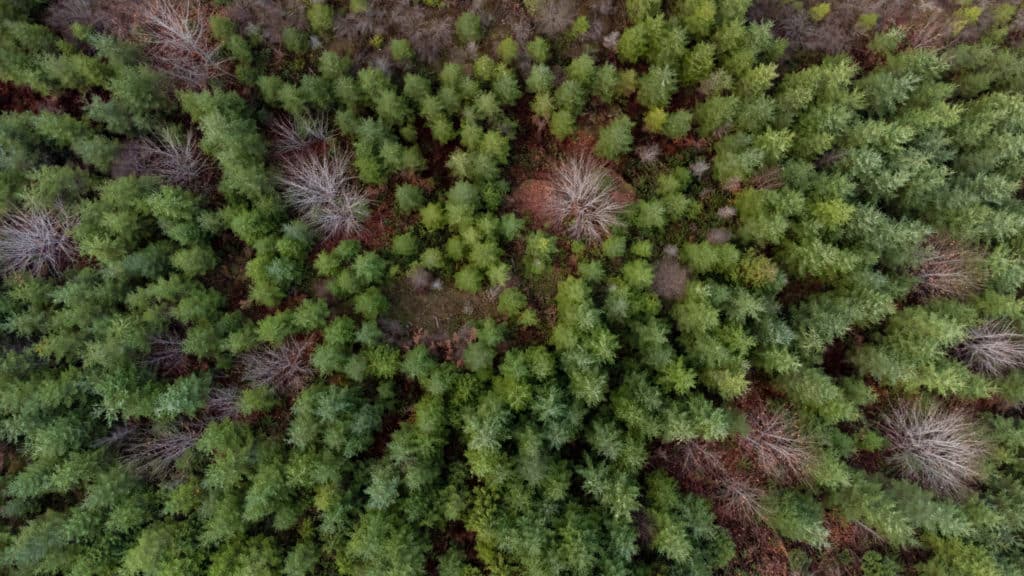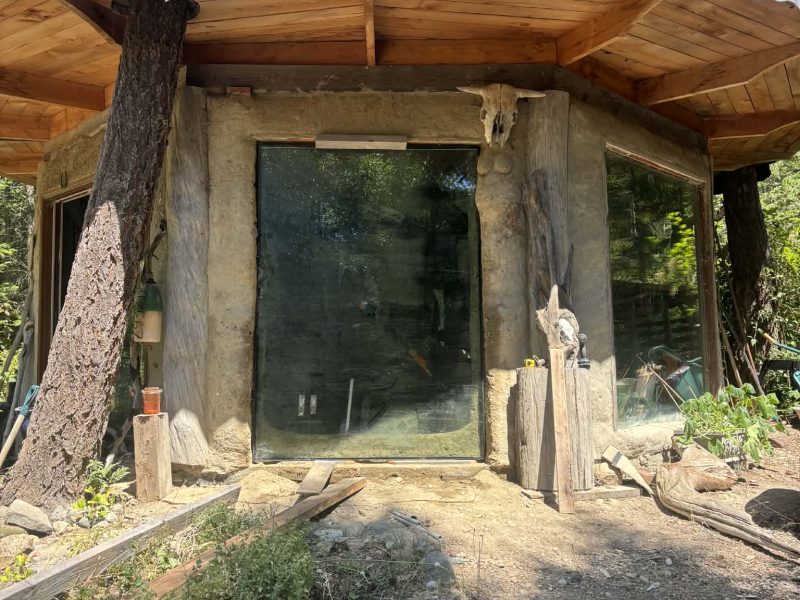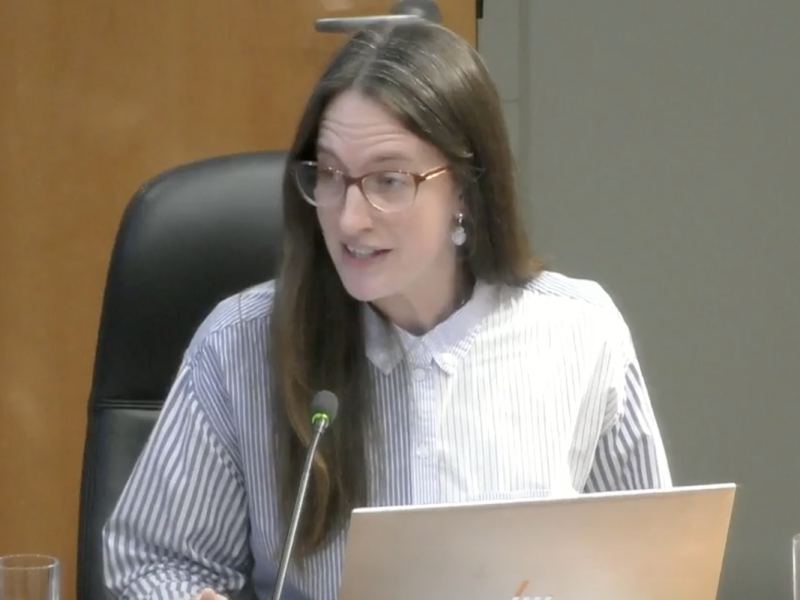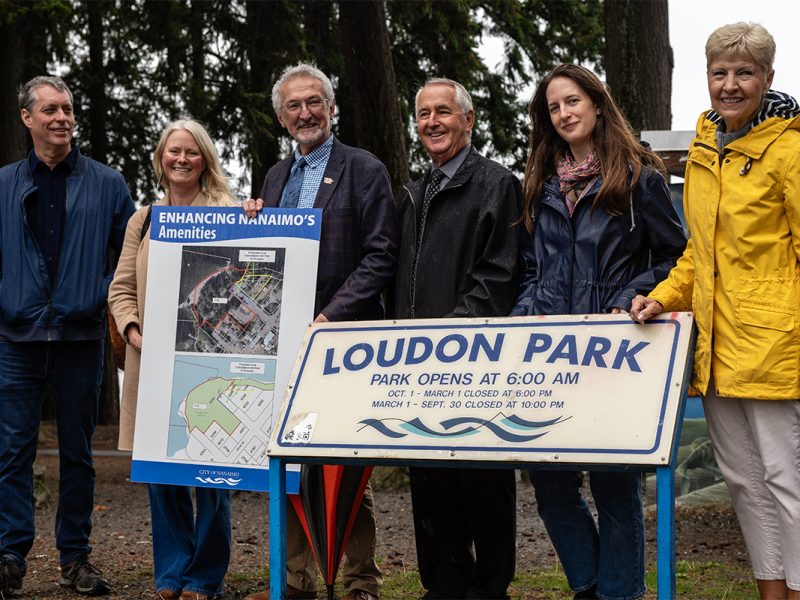
This article is part of a series on forestry solutions, Forests for the Future. Subscribe to The Discourse Nanaimo weekly newsletter to be the first to read these stories.
Cowichan Tribes member Tl’ul’thut (Robert) Morales is the chief negotiator for the Hul’qumi’num Treaty Group (HTG), which is made up of member nations Cowichan Tribes, Halalt, Lyackson, Ts’uubaa-asatx, and Penelakut. Together, these nations are in stage five treaty negotiations with the province and the federal government.
About 85 per cent of their traditional territories, which include valuable forest and watersheds, were privatized at the turn of the last century as part of the E&N land grant. To better understand the impacts associated with this colonial act, reporter Julie Chadwick interviewed Morales. This Q&A has been edited and condensed for clarity.
How did a quarter of Vancouver Island end up privatized?
So the E&N land grant that gave away the two million acres of land on Vancouver Island included around 85 to 90 per cent of the traditional territory of the Hul’qumi’num member nations. And at that time both levels of government — this was in the late 1800s, early 1900s — didn’t accept that First Nations had any land rights. They denied that they had to do any kind of negotiation or any kind of compensation or treaty or anything of that nature. So British Columbia granted the land to Canada, Canada granted the land to the E&N railway, to [Robert] Dunsmuir. And it privatized all of that land. All of the surface and subsurface resources were part of that deal.
Dunsmuir and E&N were the major beneficiaries of the grant. Since then, it has passed from one corporate ownership to the next and it’s been broken up into smaller pieces at times. I know that they’ve sold bits and pieces here and there. But generally, they’ve maintained their ownership of the big lot. The corporate ownership overall has stayed intact.
What about the rights of First Nations?
There is an absolute refusal to put those lands squarely on the [negotiating] table. When [Gordon] Campbell was the premier and put out that referendum on treaty [negotiations], the first question was, “Should private land be on the table?” And of course, the majority of British Columbians said no. So we’re still in that conundrum.
There has been no positive court decision that has dealt with this outstanding question, and the outstanding question is, “What are the land rights of First Nations whose traditional territory have been unlawfully confiscated?” And, and that’s what we say happened, that this was an unlawful act that both levels of government were — even back then — under obligation to deal with.
Canada had been dealing with treaties and negotiations prior to this grant happening. But in British Columbia, the colonial government took a very negative view of First Nations land rights and denied that they existed, right up until the Delgamuukw decision in the 1980s.
Throughout history, [the colonial government] simply denied that First Nations had land rights. They maintained that any land rights that First Nations had, had been extinguished through their domestic legislation. So we’ve been battling against this at the negotiating table and we maintain that our rights were not extinguished and that our property rights continue to exist. And it really does call into question the lawful ownership of those lands by third parties. I’m sure that their position would be that, “Well, we acquired these lands for good value. We acquired them in good faith.”
It’s simply a political statement that they’re making, is that they choose to not acknowledge that these rights exist. And they say that, “Well, because we granted those lands away…” Even though they didn’t have ownership of the lands!
And that’s the interesting thing. When you look at the court decisions, the Delgamuukw decision and the Tsilhqot’in decision, they’ve said that in relation to Crown land, the only interest the Crown has is the underlying title — they call it the radical title. And that radical title doesn’t give the Crown ownership and that radical title doesn’t give the Crown any beneficial rights.
In the Tsilhqot’in decision, the court found that the Tsilhqot’in people had proven that they have title, that they then had all of the rights of ownership. They have the right to benefit from the land, they have the right to manage the land, and so forth.
So if in the case of Crown land, the Crown doesn’t have complete ownership, then the question is: how did the Crown get the right to sell it? What gave the Crown the right to sell those lands to the E&N Railway? It’s a very complex issue.
What have First Nations been able to do about the E&N land grant?
We did put TimberWest on notice. We had opposed the sale of TimberWest to the pension funds.
So TimberWest is currently owned by the federal and provincial public service pension funds. Those pension funds own a huge part of our traditional territory. We were opposed to that sale, and we voiced our opposition and said, “This is still an outstanding issue. You can’t sell this land, because it’s not resolved, it’s still in dispute.”
Well, they went ahead and sold it anyway. So we’re pushing hard for a resolution. [Both the provincial and federal governments have] adopted or publicly indicated that they acknowledge and passed domestic legislation that says they support the United Nations Declaration on the Rights of Indigenous Peoples. Well, that declaration has provisions around it that speak to this issue, that when nation-states take Indigenous people’s lands, that they do have an obligation to make redress.
What are the options moving forward?
The government can expropriate lands to return them, but they said they’re not going to do that. There’s no political will. And they’re not going to go up against private landowners and say that they’re going to expropriate their lands for treaty, and we haven’t asked for that. But that’s an option.
The next option is that they can purchase those lands and return them. And, again, that hasn’t been put forward — at least by government— we’ve been pushing for it.
The next option is, if you can’t return the lands, can you replace them? Well, the government can’t really replace them because there’s not the land to replace them with. And the third option is to make redress, including compensation.
This is still very much a live issue for us in our negotiation process. We maintain that government has to come up with a solution to this issue. We haven’t relinquished our ownership interests. We haven’t acknowledged that those interests no longer exist, and maintain that, in fact, that they continue to exist. But that the government refuses to recognize and have acted as if they no longer exist. And that’s problematic.
How are E&N land grant lands regulated?
There was a report done in the 1950s, the Sloan report. And it was a commission that looked at the forest resources, there’s plenty. And one of the issues that they were looking at was the E&N Railway. And even as far back as the 1940s and ‘50s, there were questions about this grant and the fact that such a huge tract of land was granted away to a private railway company in absolute, fee simple, and that the citizens were not happy with this situation. And I know that that’s been the case ever since.
Not only are First Nations questioning the grant, and opposed to the grant, but I think non-First Nation citizens are also in the same predicament: here is a huge tract of Vancouver Island that is in the hands of private forest companies, and they can do whatever they want on those lands. They’re not regulated.
Now, we made submissions to the Minister, in terms of looking at the Privately Managed Forest Lands Act (PMFLA), and the way that’s set up, and it’s those forests companies are virtually policing themselves. So there’s a lot of problems with the way this is currently being dealt with.
And Mosaic is just a shell company. TimberWest and Island Timberlands agreed to collaborate on the management of these lands so they set up a company, Mosaic, to do that. But TimberWest and Island Timberlands still have the ownership interest in these lands, and they are still in charge.
I mean, they maintain — especially I think TimberWest maintains — they have good relations with First Nations. And in fact some of the member nations for the Hul’qumi’num Treaty Group have agreements with them. But in my opinion, those are bare in terms of the commitments by the timber companies.
We’ve been working on trying to get a handle on: How much timber have they extracted? How much do they extract? But those things are confidential. So they don’t have to disclose how much timber they’re harvesting, they don’t have to disclose what their plans are to harvest, I mean, they’re virtually unregulated. And that’s a challenge.
Could parts of the E&N land grant area be preserved as parks?
The general public is saying, “Well, we want to preserve these places as our recreational areas or for other uses.” How does that benefit First Nations?
And we’ve been very clear that for our nations, we are interested in acquiring part of our territory back. We have needs for community expansion, so we need lands for our communities, in terms of housing, public facilities and so forth. We need lands for economic development, and we need lands for cultural use. Whether preserving areas would be consistent with their cultural use is something that we’ve had some discussion about, but there hasn’t really been a conclusion to that.
A good example is the Gulf Islands National Park Reserve. On one of those islands, the federal parks will close the park down for a period of time and allow the Hul’qumi’num and other First Nations to go onto the island and hunt for deer because they have a surplus of deer that populate the islands. So that’s an example of how the interest that the general public has, and the interests of the First Nations people do match up.
Those are questions that would need to be discussed with each nation: What are your interests in the land? And how do they line up with the general public’s interests in the land, and the preservation of nature and so forth?
What might these forests look like if they were managed by First Nations?
I think that First Nations are not necessarily opposed to extracting timber. But they are opposed to the methodology of some of the extreme clear cuts that we see. So those clear cuts that you can witness — we sent a helicopter up to take pictures of the territory, and it was quite remarkable in terms of the number of clear cuts that were happening, you know, on the other side of what you can see from the highway. Once you get back in, you know, beyond the mountains here, on the other side of these mountains, and back into those valleys, they’re extracting a lot of wood. And, you know, there’s some pretty massive clear cuts. [end]



